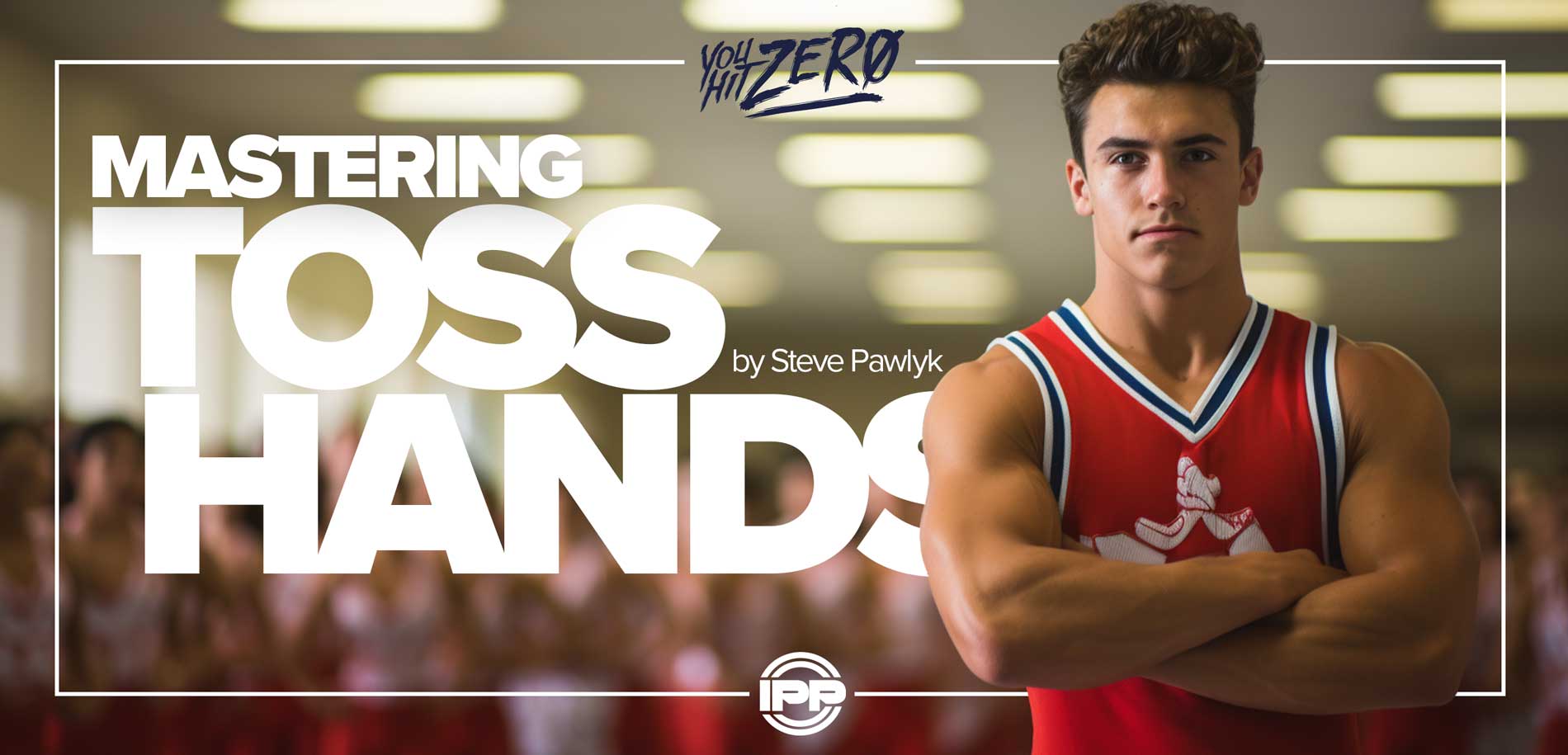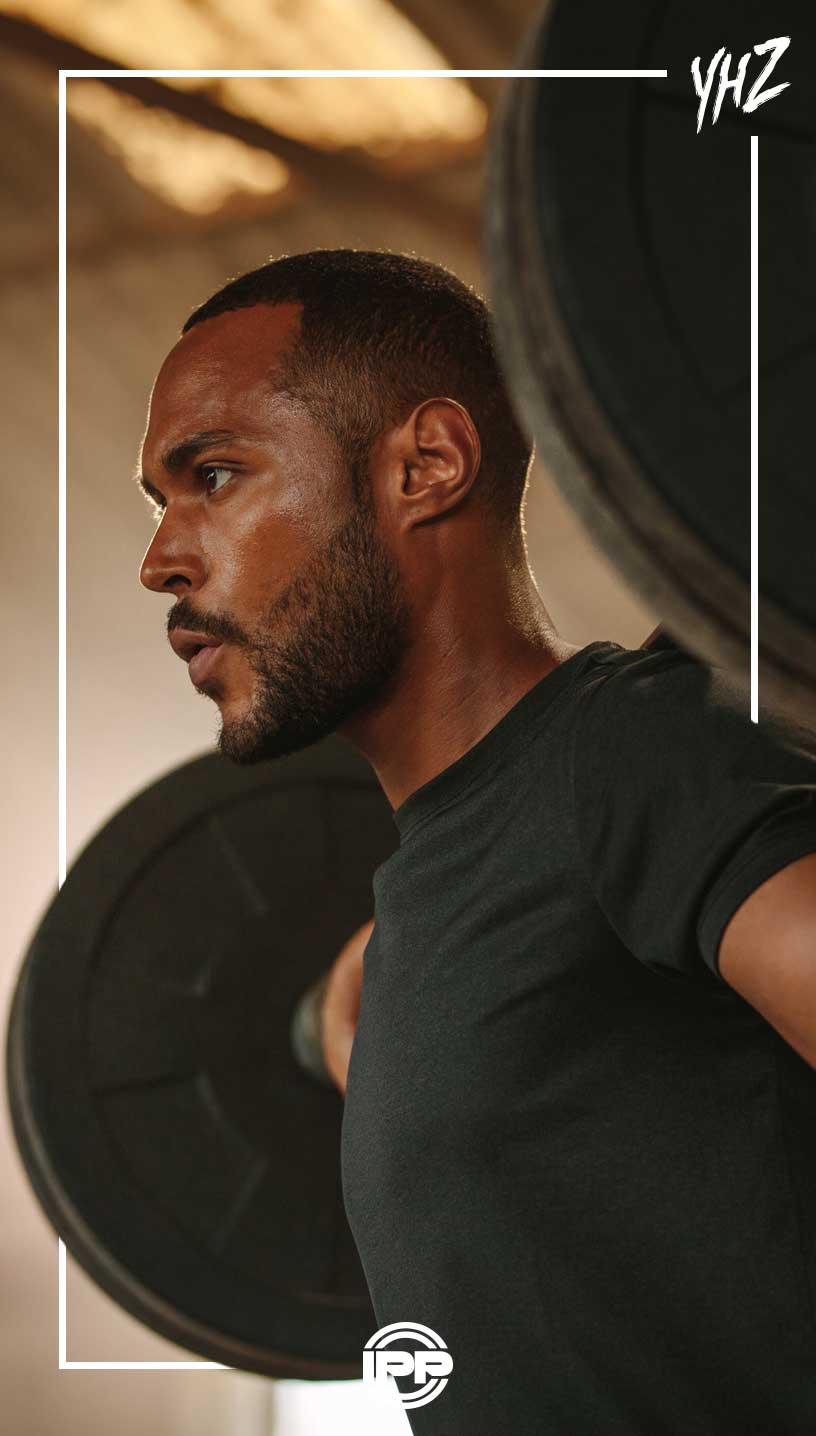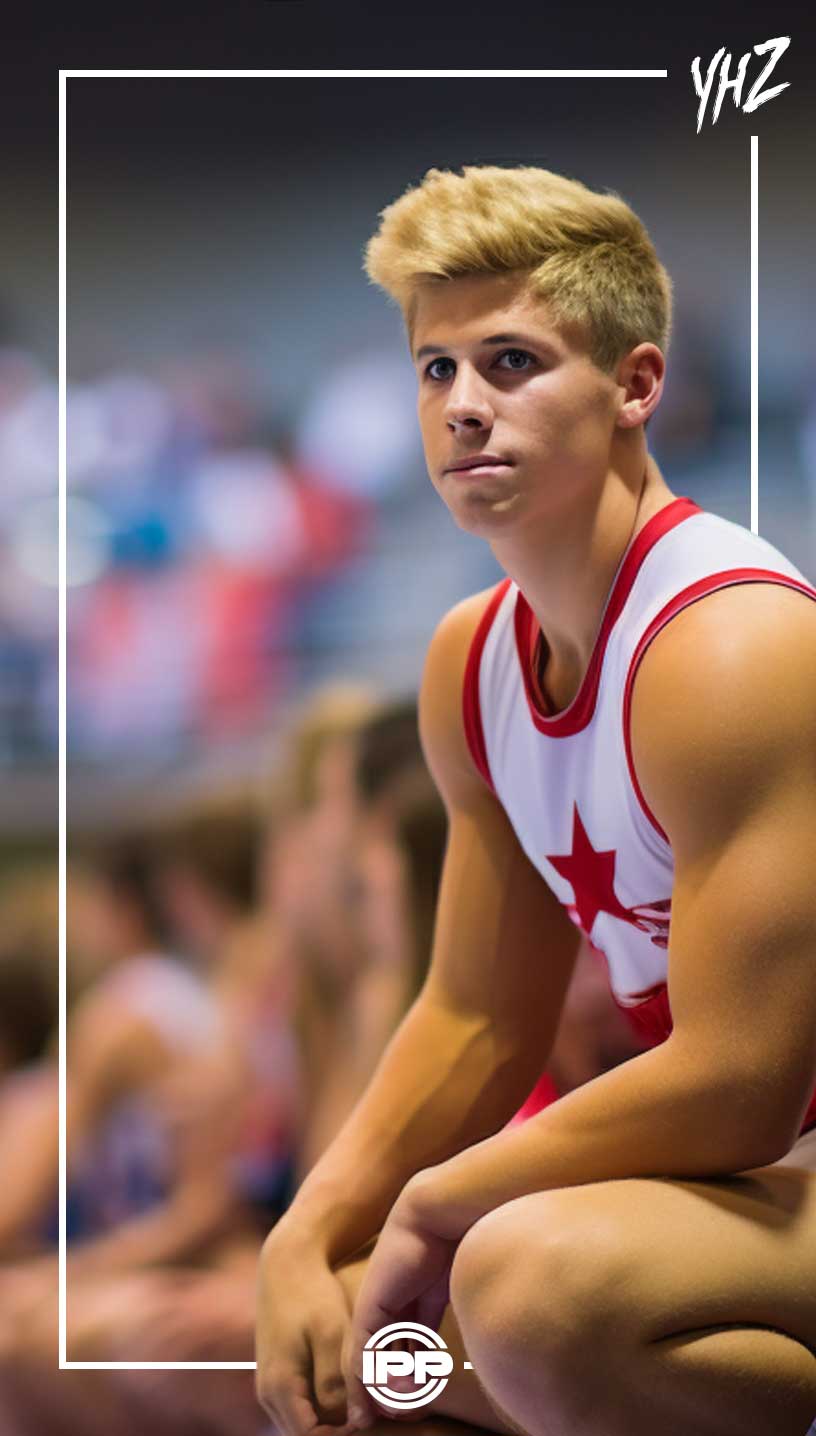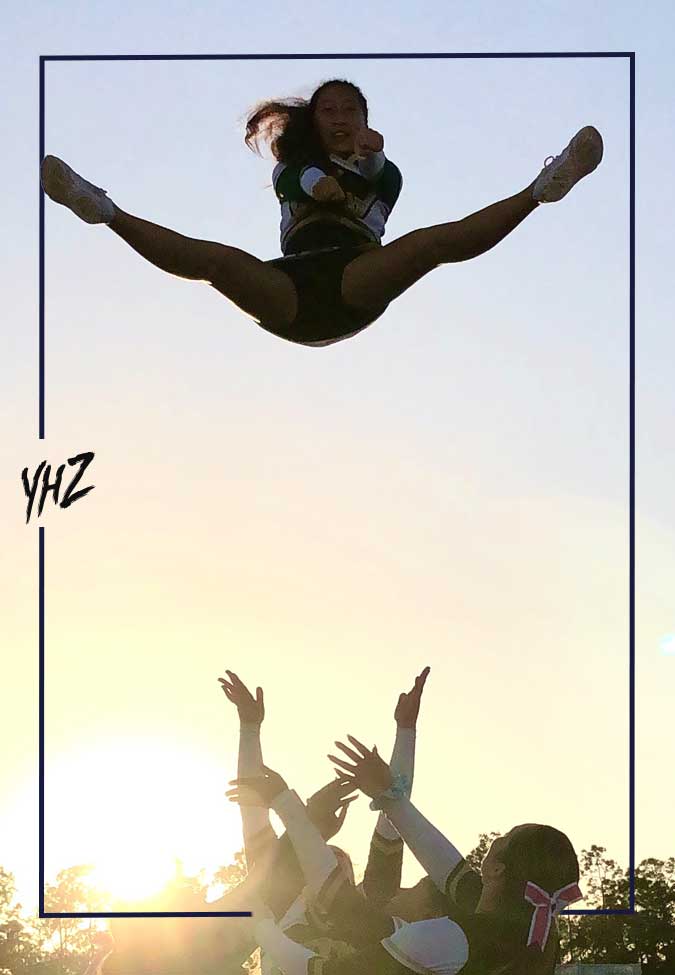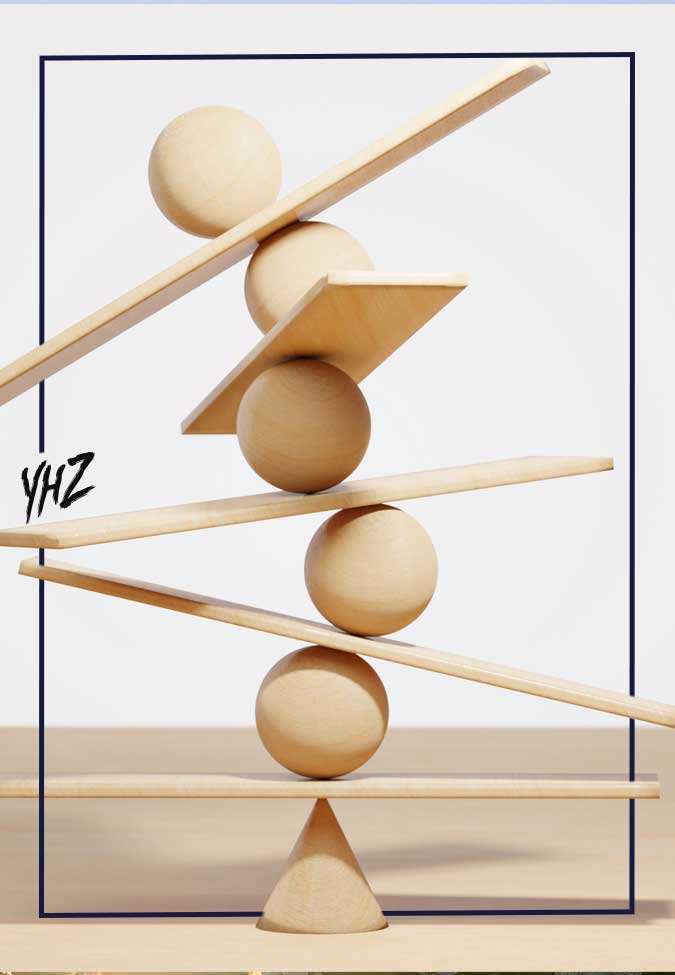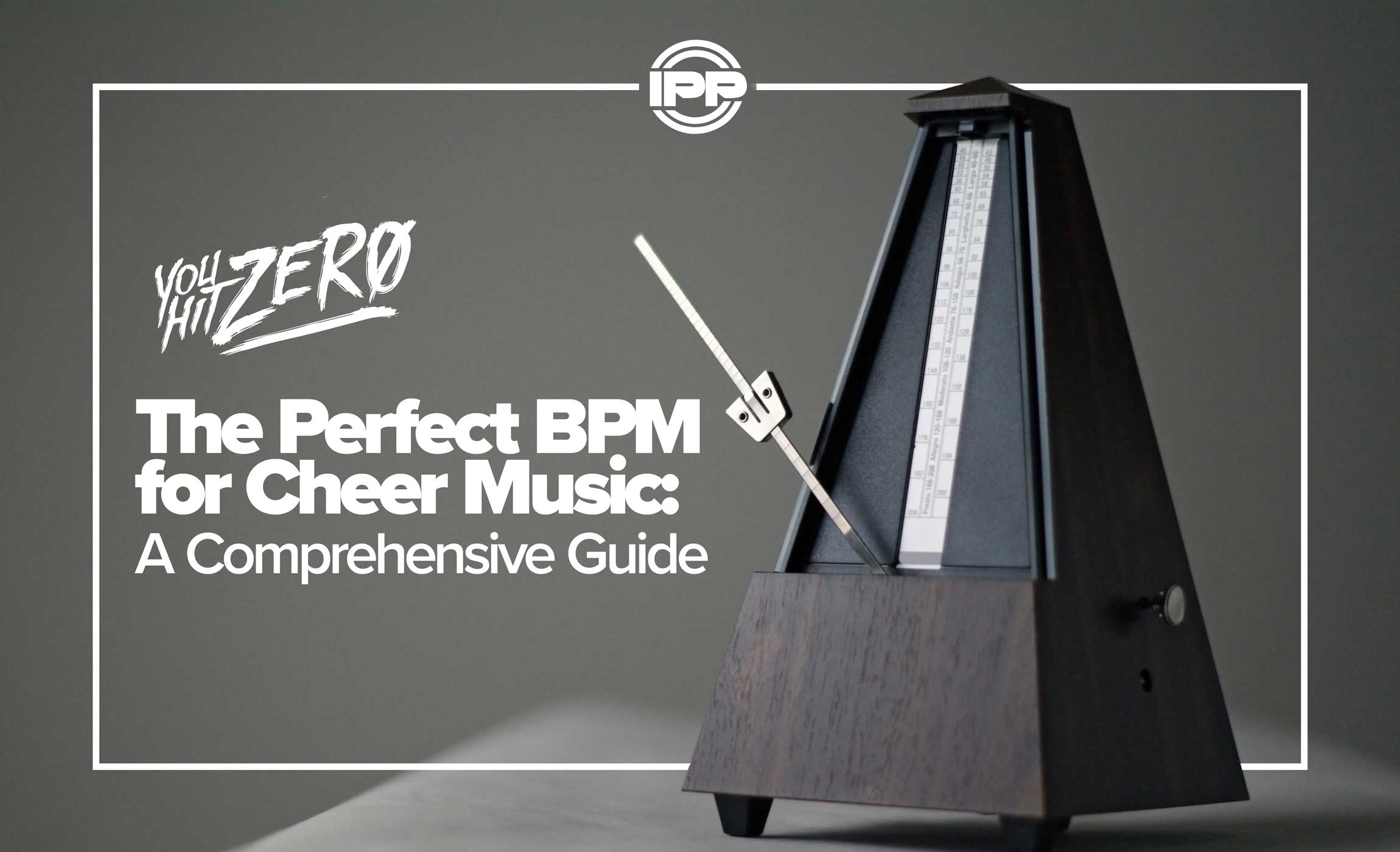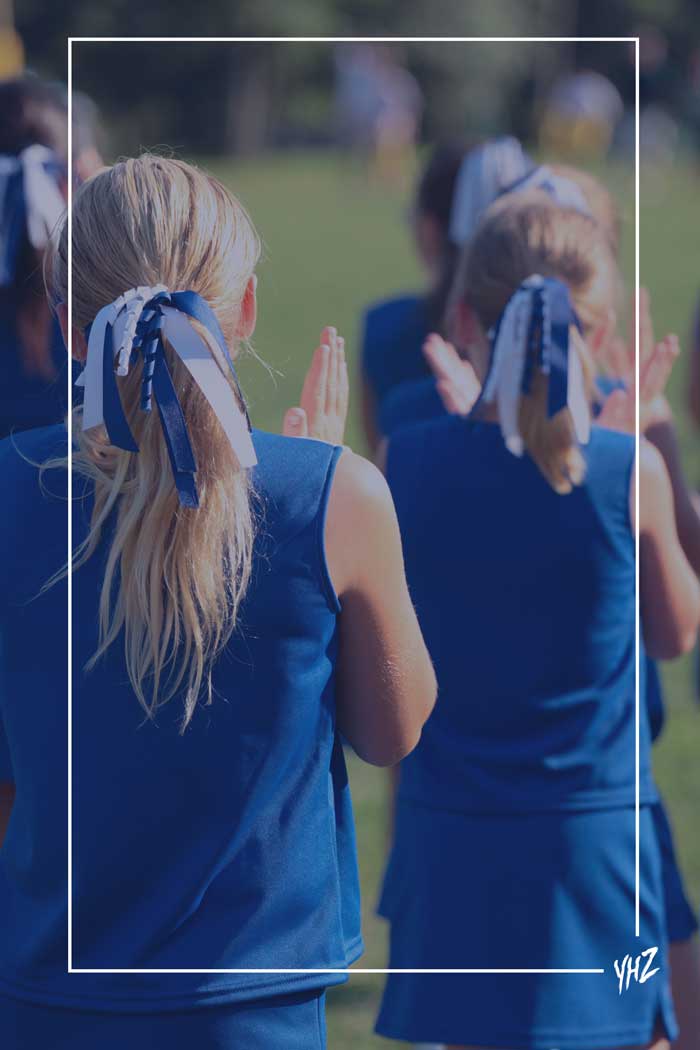By Steve Pawlyk
Published October 11, 2023
The world of cheer can be somewhat challenging, especially for those new to the scene. From unique terms, moves, and phrases, cheerleading, as a sport and art form, is replete with its own specialized language. In this comprehensive guide, we aim to break down and demystify this jargon for parents, beginners, and the curious.
1. The Origins of Cheerleading and its Jargon
Cheerleading originated in the late 19th century as an all-male activity. Over the years, it evolved and incorporated more gymnastic elements, leading to the creation of specific terms to describe stunts, moves, and formations. As the sport grew in complexity and popularity, so did its lexicon.

2. Basics: Core Terms Every Cheer Enthusiast Should Know
Flyer: The essence of acrobatic elegance in cheerleading. Being a flyer requires not only physical strength but also immense trust in the team. Elevating or being tossed into the air demands a blend of balance, confidence, and precision. The flyer’s role, though breathtaking, requires hours of practice to ensure every move exudes grace and poise.
Base: Often unsung heroes of cheerleading, bases are the foundation of most stunts. These individuals, usually with exceptional strength and stability, are tasked with the crucial job of supporting or elevating the flyer. The synchronization between bases ensures fluidity in routines and, more importantly, the safety of the flyer.
Spotter: The guardians of the cheer world. Their primary role is to ensure that no harm comes to the flyer. By being vigilant and having a keen eye for potential hazards, spotters play an instrumental role in preventing injuries and ensuring that routines are executed safely.
Routine: More than just a series of moves, a routine is a story told through synchronized dance, tumbling, stunts, and jumps. Choreographing a routine requires understanding the strengths of each team member and ensuring every movement complements the next, creating a seamless visual spectacle.
3. Deciphering Stunts and Moves
Liberty (Lib): A testament to balance and strength. This stunt demands that the flyer showcases their stability by maintaining a pose on one foot, elevated by the base. The aesthetics of the Lib are amplified by the free leg’s positioning, making it a favorite in many routines.
Basket Toss: A combination of trust and thrill. The bases use their collective strength to propel the flyer into the air. While airborne, the flyer has a brief moment to exhibit a series of tricks, spins, or poses before descending into the secure embrace of their team.
Full: An embodiment of rotational elegance. Executing a full requires the cheerleader to harness momentum and perform a complete 360-degree twist in the air. Mastery of this move is a testament to a cheerleader’s tumbling prowess.
Tick-Tock: A transition that requires impeccable timing. As the flyer switches their weight from one foot to the other, the bases and spotters must adjust in perfect harmony. The beauty of the Tick-Tock lies in its fluidity and synchronization.

4. Navigating the Competitive Arena
Zero Deductions: Every cheerleader’s dream. Achieving zero deductions signifies a routine executed to perfection. It’s a reflection of countless hours of practice, team synchronization, and flawless execution.
Full Out: The climax of preparation. In the final rehearsals leading up to a competition, athletes push their boundaries, performing routines with unmatched energy and intensity. This not only prepares them for the main event but also helps iron out any remaining imperfections.
Mat: More than just a surface. The mat is a testament to the evolution of cheerleading. Designed to aid athletes in maximizing their performance while ensuring safety, its spring-loaded mechanism is pivotal in enhancing jumps and cushioning falls.

5. Delving Deeper: Cheer Slang and Insider Lingo
Cupie: A picturesque pose that showcases the synergy between a flyer and their base. Achieving the Cupie requires the base to display immense strength and stability, allowing the flyer to strike a balanced pose on one foot high in the air.
Crisping: The art of refinement. As teams approach competition day, every gesture, move, and formation is reviewed and refined. This process ensures that routines are not just technically sound, but also aesthetically pleasing.
Choreo: The heart and soul of any routine. Choreography sessions are a blend of creativity and athleticism. It’s during these sessions that routines come to life, with every move meticulously planned to ensure visual appeal and team synchronization.
6. Essential Tips for Parents and Newbies
a. Immerse Yourself: The world of cheerleading is vast and vibrant. To truly understand its intricacies, one must dive deep. Engaging with dedicated platforms, such as this blog, provides insights, stories, and experiences that will help you understand the cheer world.
b. Active Observation: There’s a difference between watching and observing. By actively analyzing routines, newbies can begin to understand the technicalities of moves, the importance of synchronization, and the sheer effort that goes into every performance.
c. Network: The cheer community is vast and usually very supportive. By connecting with seasoned parents, experienced cheerleaders, and dedicated coaches, newcomers can gain invaluable insights, tips, and advice that can help navigate the initial stages of their cheer journey. Look for facebook groups centered around the gym you or your child is in or groups that are just cheer focused. You can glean a lot from just viewing discussions between seasoned cheer people who know what they’re talking about.
Understanding the language is the first step in appreciating the dedication and passion of cheer. Every jump, tumble, and stunt is a story waiting to be told. So, immerse yourself, observe, learn, and above all, keep reaching for zero!
IPP's Premade Mixes are USA Cheer Compliant and customizable! Add Sound FX, swap songs, & more! Add your Team Name to the mix for only $10!








